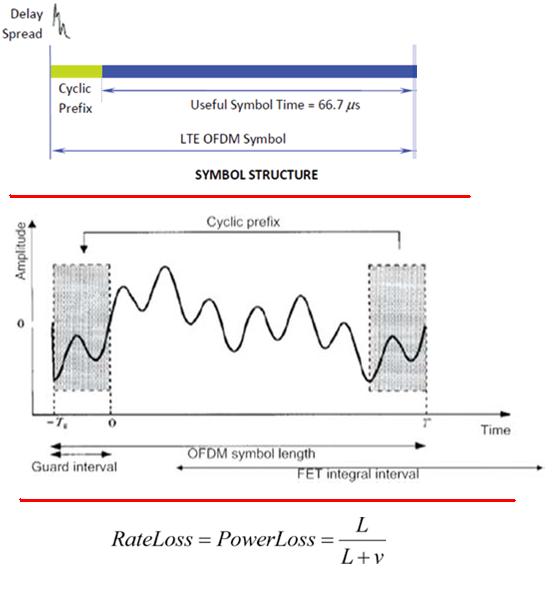The key to making OFDM realizable in practice is the use of the FFT algorithm, which has low complexity. In order for the IFFT/FFT to create an ISI-free channel, the channel must appear to provide a circular convolution. Adding cyclic prefix to the transmitted signal to create a signal that appears to be just like circular convolution and this is done by copying the last part of each OFDM symbol to the front of each symbol with the length of a guard interval, to form a cyclic prefix (CP).
Also, to prevent the guard interval from destroying the inter-sub-carrier orthogonality, the delay of each path should not exceed the guard interval where the number of waveforms within the integral time of the FFT is an integer.
The cyclic prefix, although elegant and simple, is not entirely free. It comes with both a bandwidth and power penalty.
Since redundant symbols are sent, the required bandwidth for OFDM also increases. Similarly, an additional symbol must be counted against the transmit-power budget. Hence, the cyclic prefix carries a power penalty of v dB in addition to the bandwidth penalty.
In summary, the use of the cyclic prefix entails data rate and power losses. The “wasted” power has increased importance in an interference-limited wireless system, causing interference to neighboring users.
Where L is the power used for non CP transmission. In the case where there is a large delay spread, e.g. due to large cell radius, an extended CP option can be used.
